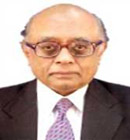Rajagopala Chidambaram – Man Behind India’s Atom Bomb

He was a key member of the core team that secretly designed India’s atom bomb. But ever since he took over as chairman of the Atomic Energy Commission in February 1993, Dr Rajagopala Chidambaram, 58, has strived to bring a new openness to India’s nuclear programme. Last fortnight, Features Editor Raj Chengappa interviewed him at his Bombay office overlooking the Gateway of India. Excerpts:
Q. How do you view the current US moves to push its non-proliferation policy in South Asia?
A. India has observed the longest moratorium on nuclear bomb explosions. So we don’t have to take lessons on morality from the US or anyone else. Everything that is being said now, including a comprehensive ban on tests, was propagated by India in the ’50s, which was 70,000 nuclear weapons earlier.
Q. What is the regime on control of proliferation that would be acceptable to India?
A. We have made it clear that our proliferation concerns are second to none. But any move to eliminate fissile materials of weapons grade should be universal, non-discriminatory and should not affect our civilian nuclear programme. We are not in favour of any regional capping effort or having countries broker a deal between India and Pakistan on the nuclear question. We can do that bilaterally with our neighbour. When the US and the others are ready to address the question of global nuclear disarmament, we will be a major participant. Till then we are saying, leave us alone. Our record is clean and we have behaved well.
Q. Reports had it that the first bomb India exploded was a crude one?
A. We are the only country so far to have conducted our first test underground. It was a measure of how confident we were of our design. Everything worked as planned. There was no radiation emitted on the surface. That’s how good our bomb was.
Q. Is India still making bombs?
A. That’s a pointed question. And I would not like to comment on our nuclear weapons capability. Let me just say that we have built up an extraordinary range of knowhow and expertise on all aspects of nuclear technology, especially in applications such as power, medicine and agriculture. There is now nothing India cannot do.
Q. But India’s performance on nuclear power has been far from satisfactory.
A. If you are referring to the so-called ‘10,000 (MW) by 2000 (A.D.)’ slogan, sure it has been. But if we have fallen short of the targets set, it’s because of lack of funds. We have certainly not been limited by technology. There’s been a major cutback on resources and my concern is that we shouldn’t allow our programme to slow down so much. We have mastered the technology after tremendous efforts and investment. And there is a danger of losing what we have gained.
Q. But some reactors have run into major problems such as turbine failures.
A. True. And there is definitely a need to improve quality especially in the machinery industry. Also, bad grid frequency has been a big problem leading to constant trips and putting machinery under unnecessary strain. But all the problems were part of our learning curve. Now we have been able to overcome them.
Q. Nor has nuclear power lived up to the claim of being cheaper.
A. In costs, we compare well with thermal plants that are located at 500 km or more from the source of coal. And we would run out of coal resources in 100-odd years. The country is power hungry and nuclear power is an inevitable option for India. It is the future.
Q. How safe are the plants?
A. We have an independent Atomic Energy Regulatory Board that is strict and tough on any slip-up. It ensures that our safety standards are of international class. Barring the fire at Narora caused by a turbine failure last year, our record has been very good. In almost 30 years of operating power plants, we have had no event that could be termed as an accident.






Leave a Reply